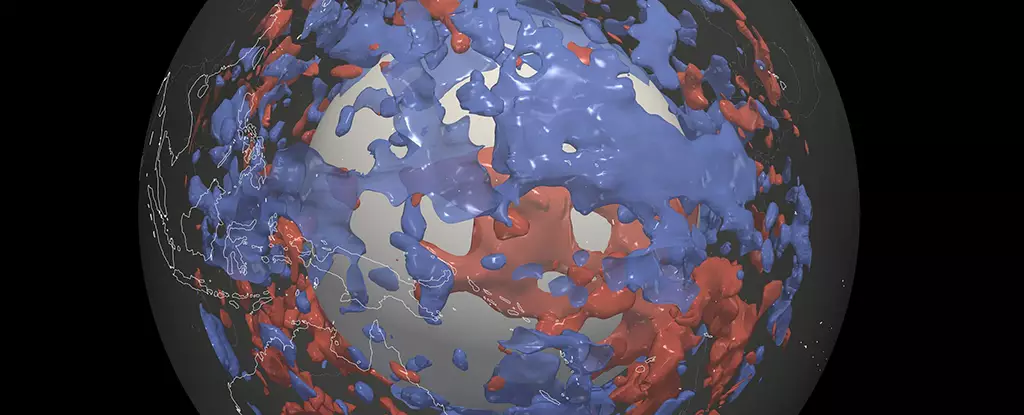Understanding the Earth’s inner workings has long been a pursuit of scientists, and seismic waves offer a crucial window into this hidden realm. These waves, originating from tectonic activity, provide vital information about the composition and structure of the Earth’s interior. Recent advancements in computational power and techniques have revealed unexpected findings that challenge established geological models.
A remarkable collaboration between the ETH Zurich in Switzerland and the California Institute of Technology has led to significant breakthroughs in the study of seismic waves. Their interdisciplinary team harnessed the immense capabilities of the Piz Daint supercomputer to examine an extensive dataset of seismic signals, leading to enhanced resolution of the Earth’s lower mantle. This innovative approach allowed the researchers to explore seismic waves with greater complexity than traditional analyses, which often focused on a limited range of wave types.
Seismic waves travel through the Earth’s layers at varying speeds, providing a unique signature of the materials they encounter. When these waves hit denser or cooler areas, they change speed or bounce back, revealing the geological features below. The analogy of music from a nightclub holds true here: just as the acoustics change with different materials, seismic waves create a “soundtrack” that can be deciphered to understand the planet’s internal architecture.
Radical Findings: Tectonic Plates in Unlikely Locations
One of the key revelations of this study was the presence of large, dense masses within the lower mantle, resembling remnants of tectonic plates. These structures were identified far from known subduction zones—the usual locations where tectonic plates dive into the Earth’s mantle. Among these unexpected locations is beneath the western Pacific Ocean, where the team found evidence suggesting that remnants of tectonic activity are distributed much more widely than previously understood.
Thomas Schouten, a leading Earth scientist involved in this research, emphasizes that these findings could point to a diverse range of geological processes, not solely confined to subduction. The depths of the mantle may contain ancient, silica-rich materials that have persisted since the Earth’s formation, or areas where iron-rich rocks have aggregated due to long-standing mantle convection processes. This dual possibility opens new avenues for interpreting the Earth’s geological history and dynamics over billions of years.
The study signifies a critical turning point in our understanding of Earth’s internal structure. Traditional geological models, heavily relying on subduction zones as the primary explanation for certain geological phenomena, may require reevaluation. The discovery of these widespread lower mantle anomalies suggests a more intricate and interconnected Earth, with material movement and changes occurring beyond the previously accepted norms.
While the initial findings are groundbreaking, researchers acknowledge the need for further investigation. Understanding the exact nature and origins of these chunks of rock is essential. The data suggests that these structures may represent lost layers of tectonic plates or remnants of ancient geological processes long since forgotten. By delving deeper into the material composition and the environments from which these structures originated, scientists hope to piece together a more comprehensive narrative about the Earth’s history.
Each discovery made through the lens of seismic waves invites us to ponder the Earth’s complex story. The unseen dynamics that operate beneath our feet hold answers to questions about the planet’s formation and evolution. As technology advances and methodologies improve, the potential for uncovering more of these secrets is limitless. This research not only expands our knowledge of geology but also reinforces the notion that Earth continues to surprise us with its intricacies and age-old narratives.


Leave a Reply